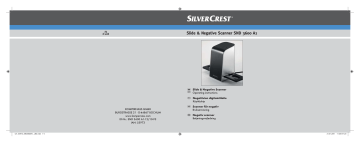


It comes with its own easy to use software. Overall, I quite like this scanner for black and white only (the results with colour negatives are really bad). I was tired of looking at my negatives with a loupe but I also wasn’t ready to spend money on a more expensive device. The first scanner is the Silvercrest Negative Digitiser SND 3600 D3 which was the first scanner I purchased after I took on my lockdown project of developing my own black and white films. The ScannersĪll the scanners I’m comparing are for scanning 35mm negatives or slides. Scanning and sharing pictures on social media is technically far less demanding than scanning and printing them to hang on your wall but no less rewarding. The best scanner for you will depend on your own budget and what you intend to do with the digitised images. I’m not going to try and tell you what to choose. Lastly, there is no absolute “best scanner”. Dynamic range is the number of shades of grey that a scanner can record when scanning a negative.

Black and white films generally have a wide exposure latitude, basically the number of shades of grey the film can record between pure white and pure black.

Resolution is a big, impressive sounding number that most folks have gotten used to from buying mobile phones, TVs and computer monitors whereas dynamic range is a small sounding and unfamiliar number. The resolution of a scanner is important but so is dynamic range of the scanner. It is a misconception is that resolution is everything. The Nikkor is technically superior but I prefer the way the Summicron handles the mid tones in my black and white images. I have a superbly crafted and expensive Leitz Wetzlar Summicron-C 40mm f/2 lens made by Leica in the late 1970s, which isn’t as sharp as my considerably cheaper Nikon Nikkor AF-D 50mm f/1.8D lens that was made in China in 2009.
#Silvercrest negative scanner driver drivers professional
The optical quality that was once only available to professional photographers is now available in consumer products. Lens quality has improved hugely in the 20 years since the big Japanese camera brands stopped investing in film cameras. For example, the use of infrared light to minimise the effects of dust on the negative only works with colour negatives.įirst, if you want super sharp, high resolution images don’t shoot film or at least don’t shoot 35mm film. There are lot of well meaning people that will tell you that this factor or that factor is crucial but some factors are more relevant than others. These include: the uniformity of the brightness and colour temperature of the back light the resolution of the scanner’s sensor the quality of the scanner optics whether the scanner has an infrared channel and whether the scanner has fixed focus or auto focus. There are lot of different factors that affect the “quality” of a digitised film negative. I also enjoy the challenge of having to think for myself more and having to wait to see the results of my work. Something that I haven’t been able adequately to reproduce from a modern camera lens and Adobe Lightroom and a marketplace of presets. I shoot with 70s vintage rangefinder cameras specifically because I want my photos to have that “70s character”. Others simply do it for the novelty value. Some do it for the artistry of film photography that is challenging to reproduce in Adobe Lightroom. Some people do it for the challenge that comes from not having the instant feedback of digital. Like me, most people get into film photography either by buying an old camera from the 70s, 80s or 90s or a new camera from a brand like Lomography. Then I’ll use a fourth negative to show you how you can do it your self for under €50. In this article I’m going to use three 35mm film negatives to discuss what you should consider for when choosing an entry level scanner for digitising your black and white negatives.


 0 kommentar(er)
0 kommentar(er)
